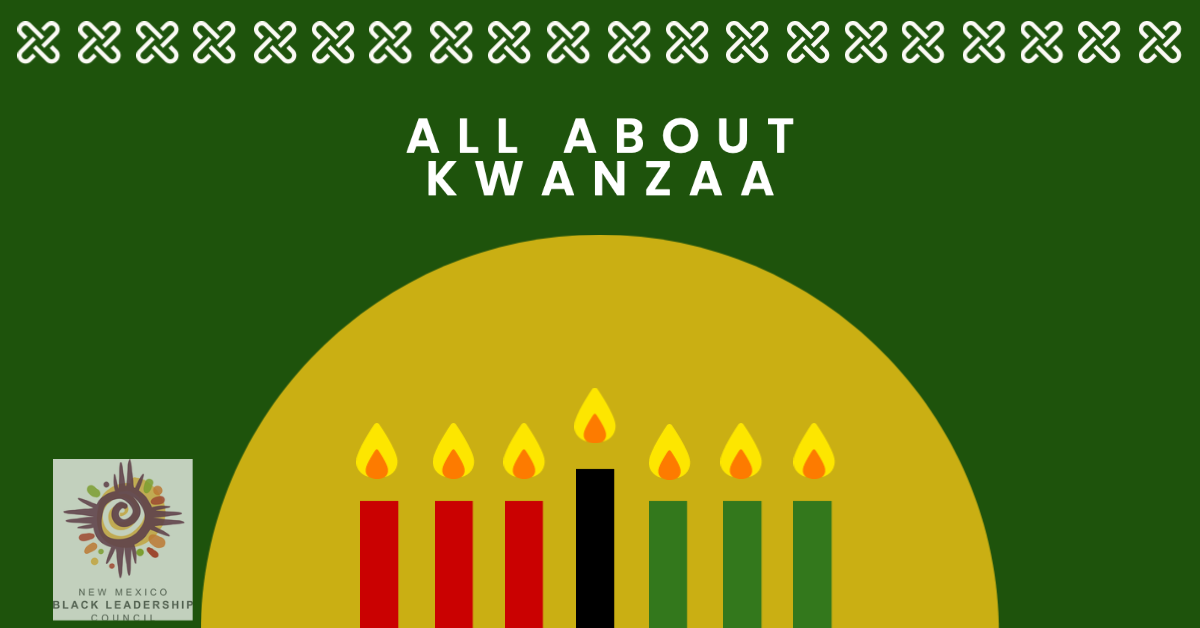Celebrate the seven days of Kwanzaa with food, community, and creativity.
In the season two premiere of the HBO comedy Insecure, Issa Dee is spiraling out from a break up with her long term boyfriend. She devises a scheme to get him to come see her, then practices how she‘ll act in the event he does. She tries out several different personas, speeches, and outfits in front of her bedroom mirror.
“This reminds me of the fifth day of Kwanzaa. Oobija. Ilani. Booyakasha.”
—Insecure, S2 Ep1
The joke is twofold.
One: Issa is invoking the principles of Kwanzaa to get her boyfriend back.
Two: she doesn’t know what the principles of Kwanzaa are, so she spews some vaguely African-sounding words that she thinks could be related to Kwanzaa.
Even though Kwanzaa is a holiday that was created by an African-American for African-Americans, it’s often the case that African-Americans can’t rattle off the meaning, origins, or principles of Kwanzaa at the drop of a hat. That’s okay. We got you. Keep reading for your guide to all things Kwanzaa.
The Origins of Kwanzaa
Kwanzaa was created by professor Maulana Karenga to unite and empower the African American community in the wake of the Watts Rebellion. It’s modeled after African harvest traditions and provides African Americans a way to honor the culture and heritage that was ripped away from them during the slave trade. Kwanzaa runs for seven days, from December 26th through January 1st. The name Kwanzaa comes from the Swahili expression matunda ya kwanza, which means “first fruits of the harvest.” First celebrated in 1966, it’s now estimated that 30 million people worldwide celebrate Kwanzaa.
The Seven Principles of Kwanzaa
Kwanzaa is based on seven principles, one for each day of the holiday.
Umoja: Unity
Kujichagulia: Self-determination
Ujima: Collective work and responsibility
Ujamaa: Cooperative economics
Nia: Purpose
Kuumba: Creativity
Imani: Faith
The Seven Symbols of Kwanzaa
Seven symbols represent the principles honored during the holiday.
Mazao: Crops, symbolizing a community harvest. Anything grown from the earth’s soil can represent a crop.
Mkeka: Mat, symbolizing the foundation of the past to build lives in the present.
Muhindi: Corn, symbolizing fertility and family.
Kinara: Candleholder, the most recognizable icon of Kwanzaa, symbolizing ancestry. It holds three red candles, three green candles, and one black candle. Some online Black owned businesses selling Kinaras: The Black Art Depot and It’s a Black Thang.
Mishumaa Saba: Seven candles, symbolizing the sun’s power to return after the darkness of winter. The colors are from the Pan-African flag: red (the struggle), black (the people), and green (the future). The candles are placed in the Kinara.
Kikombe Cha Umoja: Unity cup, used to pour liquid honoring the ancestors and for communal drinking. It’s typically displayed with the Kinara.
Zawadi: Gifts, given on the seventh day of Kwanzaa.

Ways to Celebrate Kwanzaa
Kwanzaa is a holiday that anybody can celebrate, not just African Americans. Read on for some ways to honor this holiday.
Meals
Meals play an important role in Kwanzaa celebrations. The sixth day of Kwanzaa, December 31st, is marked with Kurama, the large feast. Meals are a great way to explore and enjoy various African-American, African, Caribbean, and South American dishes. Mac and cheese, anyone?
Cookbooks to check out:
The Smithsonian’s Sweet Home Cafe Cookbook
High on the Hog by Jessica B. Harris (also available from the ABC Library System)
Rufus Estes’ Good Things to Eat (also available from the ABC Library System)
Sweet Potato Soul: 100 Easy Vegan Recipes by Jenne Claiborne (also available from the ABC Library System)
Candles
Light a candle each day to highlight that day’s Kwanzaa principle. Breathe meaning into the principles by reciting words or poetry by your favorite African American writer, leader, or activist.
And Still I Rise by Maya Angelou (also available from the ABC Library System)
Commissons y Corridos by Hakim Bellamy (also available from the ABC Library System)
Alive At The End Of The World by Saeed Jones (also available from the ABC Library System)
Call Us What We Carry by Amanda Gorman (also available from the ABC Library System)
Grinning and Bare by Ebony Isis Booth (also available from the ABC Library System)
Other Kwanzaa Celebration Ideas
Click the link on the National Museum of African American History and Culture site for more ideas on celebrating Kwanzaa:
https://nmaahc.si.edu/explore/stories/seven-principles-kwanzaa
Check out the book Kwanzaa: A Celebration of Family, Community and Culture by Maulana Karenga
Learn more at the Official Kwanzaa Website.
Read the Albuquerque Journal article on local residents celebrating Kwanzaa:
https://www.abqjournal.com/1262425/local-residents-celebrate-kwanzaa.html
Connect with NMBLC on Social

Shannon Moreau is the Editor of the NMBLC EQ Blog

Leave a Reply